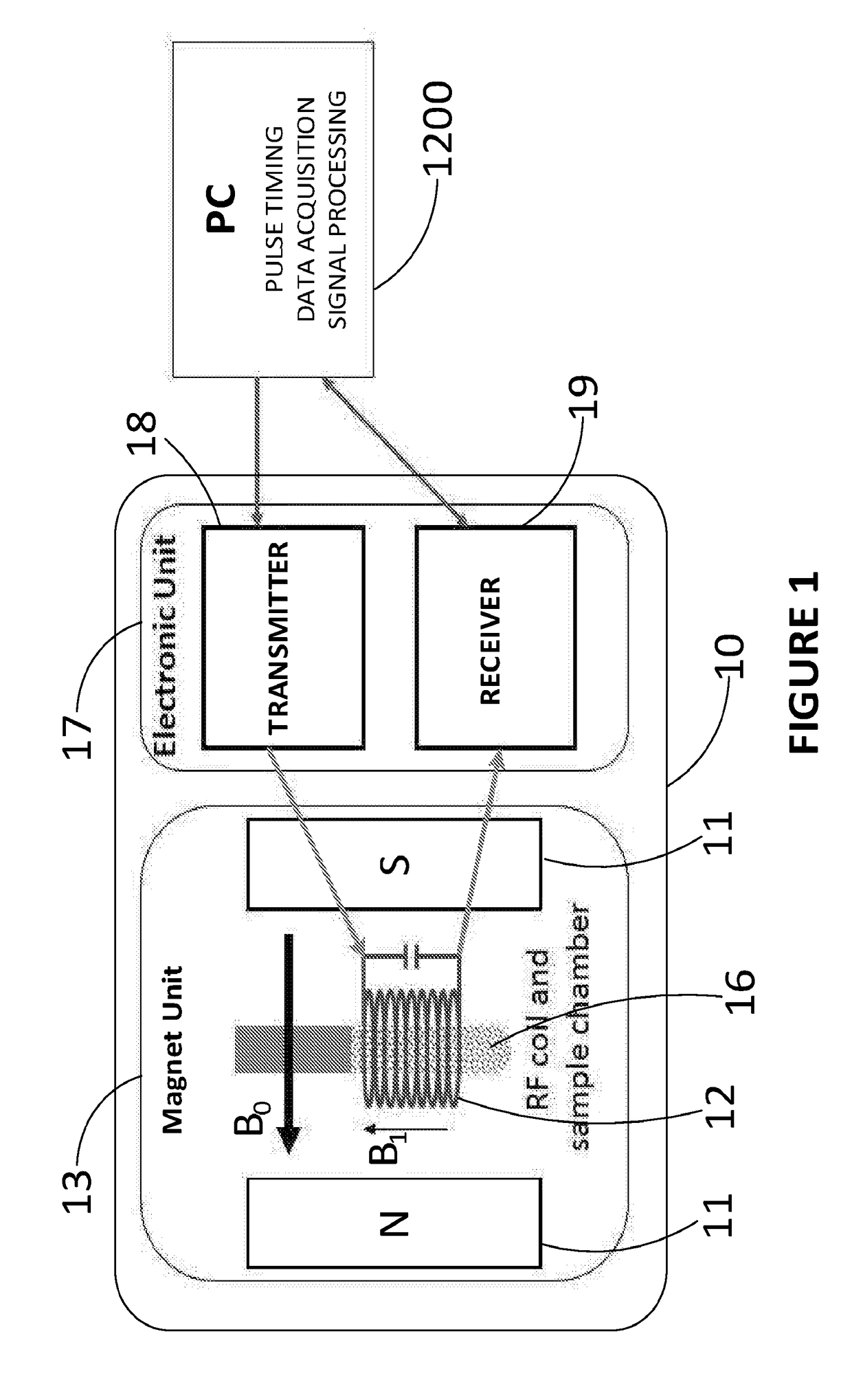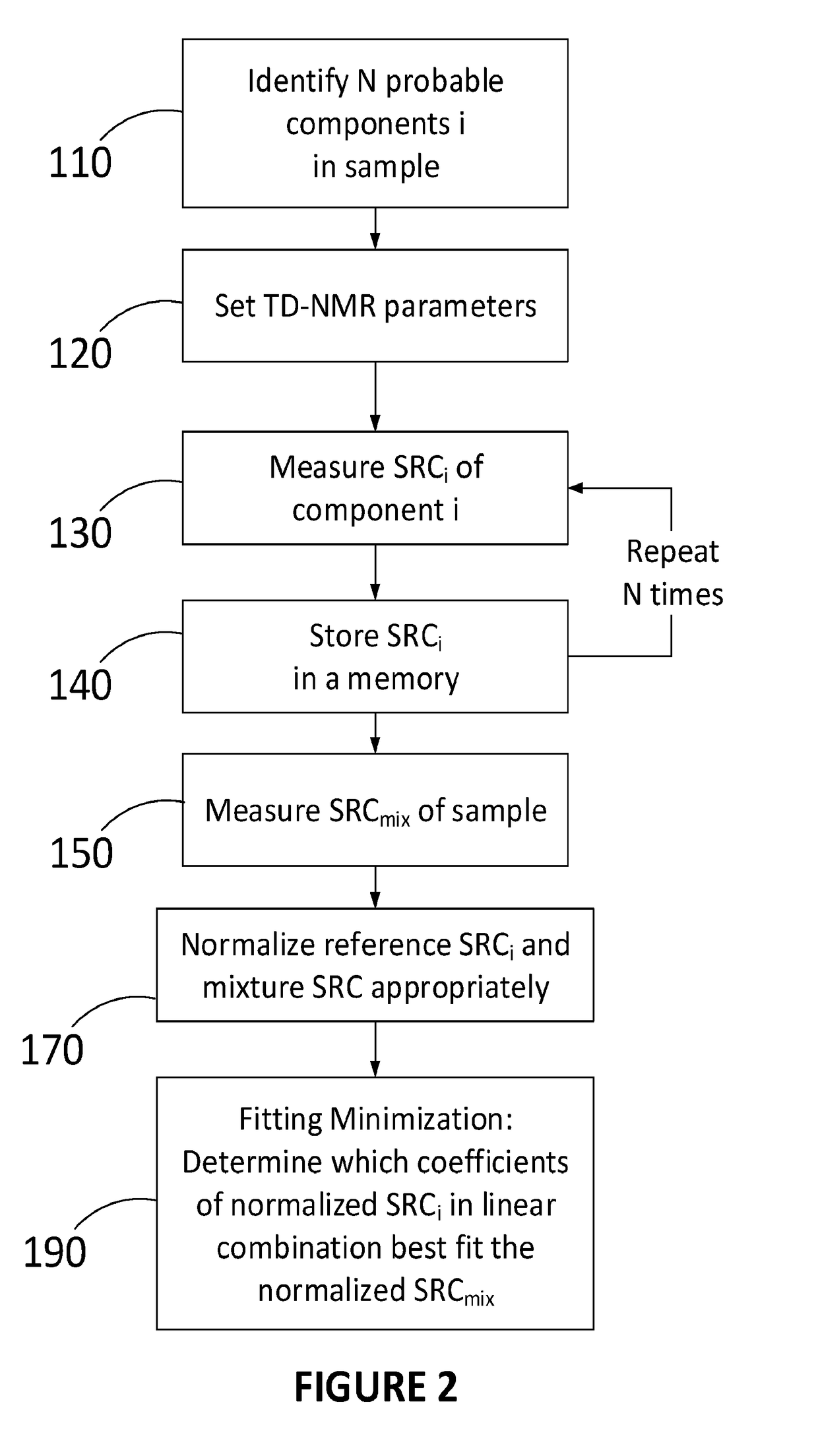Rapid quantification of components in solid mixtures of chemicals via time-domain nmr spectroscopy
a chemical and component technology, applied in the field of time-domain nmr spectroscopy, can solve the problems of complex selection and development of optimal polymorphic api forms, and api lead form change and/or amorphization
- Summary
- Abstract
- Description
- Claims
- Application Information
AI Technical Summary
Benefits of technology
Problems solved by technology
Method used
Image
Examples
Embodiment Construction
[0020]Shown in FIG. 1 is a time-domain nuclear magnetic resonance (TD-NMR) spectrometer 10 that may be used for the quantification of compounds in solid mixtures in accordance with the present invention. The TD-NMR spectrometer 10 comprises a magnet unit 13 having a permanent magnet system 11 which generates a magnetic field B0 between its magnetic poles. A sample chamber 16, in which the sample is located, lies within the most homogeneous part of the magnetic field. An RF coil 12 surrounds the sample chamber 16 and, when the instrument is operated, transmits RF pulses originating from transmitter 18 that cause excitation of the sample. Following the excitation, the sample induces a material-characteristic free-induction decay response in the RF coil 12 which is detected in conjunction with receiver 19. As shown in FIG. 1, the transmitter 18 and receiver 19 can be provided together as part of an electronic unit 17. A computing device 1200, which may be an external host computer, is ...
PUM
| Property | Measurement | Unit |
|---|---|---|
| time- | aaaaa | aaaaa |
| nuclear magnetic resonance | aaaaa | aaaaa |
| molecular weight | aaaaa | aaaaa |
Abstract
Description
Claims
Application Information
 Login to View More
Login to View More - R&D
- Intellectual Property
- Life Sciences
- Materials
- Tech Scout
- Unparalleled Data Quality
- Higher Quality Content
- 60% Fewer Hallucinations
Browse by: Latest US Patents, China's latest patents, Technical Efficacy Thesaurus, Application Domain, Technology Topic, Popular Technical Reports.
© 2025 PatSnap. All rights reserved.Legal|Privacy policy|Modern Slavery Act Transparency Statement|Sitemap|About US| Contact US: help@patsnap.com



